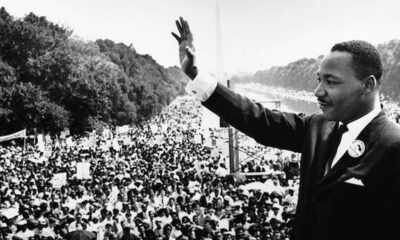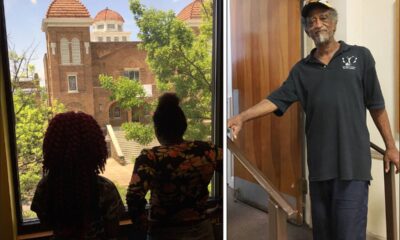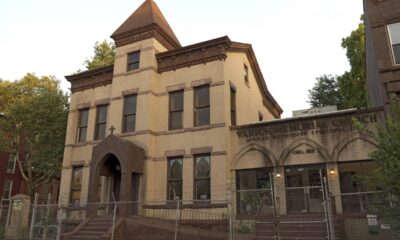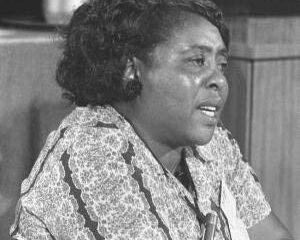Black History
Miss LeCount & Mr. Catto

Philadelphia Residents Seek Monuments to Giants in the City’s Black History, Unknown to the Rest of the World
A member of our staff introduced us to a 19th century Philadelphia story (which observes simultaneously Black History Month and March Women’s Month), and more importantly the protagonists were the Martin Luther King Jr and the Rosa Parks of that time. That there was King before Rev. Martin, and a Parks before Sister Parks, is difficult to believe. But, in fact, Caroline Rebecca LeCount (c.1846 – January 24, 1923) and Octavious Valentine Catto (February 22, 1839 – October 10, 1871) may have been role models for the Civil Rights Era activists … if the couple’s story was ever told outside of Philadelphia.
It’s another one of those many American Black History stories that did not have a happy ending.
Ms. LeCount and Mr. Catto were engaged, but they never made it down the aisle. An assassin’s bullet took Octavius’ life just after the activist cast his ballot at a polling place. He was 32. Ms. LaCount, an educator, carried the mission forward: fighting for freedom and equity. Following are some quick notes on Octavius Valentine Catto and Caroline Rebecca LeCount.
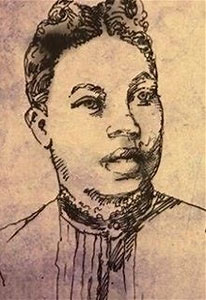
Born in South Philadelphia in 1846, one of four children of a cabinet maker/ undertaker who stowed freedom-seekers fleeing enslavement in his coffins. It is reported that her childhood home on Rodman Street was considered a safe house on the Underground Railroad.
She graduated at the top of her class from the Institute for Colored Youth in 1863, was the first Black woman in Philadelphia to pass the teaching exam. She taught at the Ohio Street School which later was renamed the Octavious V. Catto School. In 1868, she became principal of the school, making her the second Black female principal in Philadelphia. She retired in 1911, and was known for defending Black teachers “from assucations of inferiority, pointing out that they were required to receive higher test scores than white teachers in order to become certified.
Caroline Rebecca LeCount, an orator, writer and poetry reader, was described in the Philadelphia Citizen’s newspaper as “Philly’s Rosa Parks 100 years before the Montgomery bus boycott, defiantly riding street cars and filing petitions to have a law against black riders repealed.”
With her fiancé Octavius Catto, she kept up the fight even after the law was changed: When a conductor refused to stop for her, LeCount—just 21 at the time—filed a complaint with the police, eventually forcing the driver to pay a $100 fine.
She also pushed for the rights of African-American teachers and students, standing up to the school board of the Wilmot Colored School to insist a black colleague become principal because “colored children should be taught by their own,” reports noted.
She became only the second African-American female principal of a public school.
She attended which later became Cheyney State University. A noted orator, her accomplishments included
Secretary of the Ladies’ Union Association, which sent aid to wounded black soldiers during the Civil War
One of the leaders in the successful fight to integrate horse-drawn streetcars. She is credited with being responsible for Philadelphia passing a law in 1867 to ban segregation on public transport.
Also with her fiancé Octavius Catto, she worked with abolitionist William Still to make petitions for desegregation.
LeCount was a researcher for W.E.B. DuBois on his study, The Philadelphia Negro.
Miss LeCount died on January 24, 1923. Recently, some Philadelphia residents have rallied to rename Taney Street after Caroline Rebecca LeCount. Taney Street currently is named for Roger B. Taney, the Supreme Court justice who decided Dred Scott v. Sandford.
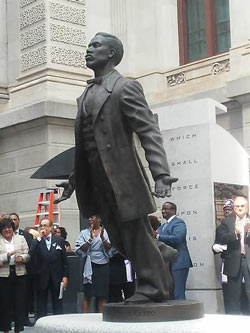
In recognition of the many contributions of Philadelphia’s own Octavius V. Catto, a prominent African-American intellectual, scholar, teacher, athlete, Civil War veteran and civil rights leader who was slain on Election Day in 1871, Philadelphia dignitaries unveiled the Octavius V. Catto Memorial — “A Quest for Parity” – on Tuesday, September 26, 2017.
The memorial sculpture — the first statue in the city’s collection dedicated to a sole African-American — is erected on the southwest apron of City Hall.
In addition to erecting the memorial monument to Octavius V. Catto, the long-range goal of the Octavius V. Catto Memorial Fund is to educate the public about Catto’s life and accomplishments, as well as highlight the contributions of other African-Americans throughout Philadelphia’s history by creating educational programs aiming at broadening the public’s understanding and awareness of African-American history..
Born in Charleston, S.C., in 1839, Catto graduated in 1858 as valedictorian of the Institute for Colored Youth, which later became Cheney University. He was a major in the Union Army during the Civil War, as well as a scholar, educator, athlete and member of the Union League, The Library Company of Philadelphia and The Franklin Institute. Catto also was an accomplished baseball player and founder of The Pythian Baseball Club.
He was a prominent civil rights leader who fought for the right to vote for all men regardless of ethnicity [women were not allowed to vote at this time] and successfully led efforts to desegregate horse-drawn street cars in Philadelphia in 1867. That was a century before the Civil Rights protests in Selma. With Frederick Douglass, Catto raised all-black regiments to fight in the Civil War; he pushed for black voting rights; and he started an all-black baseball team — all before the age of 32.
Catto, unarmed, was gunned down on Election Day — October 10, 1871 — at the age of 32 while on his way to the polls to serve in his official capacity as a National Guardsman assigned to protect newly registered African American voters.
The memorial sculpture, created by renowned sculptor Branley Cadet of Mr. Catto, is the first statue of an African-American on public land in the city of Philadelphia.


